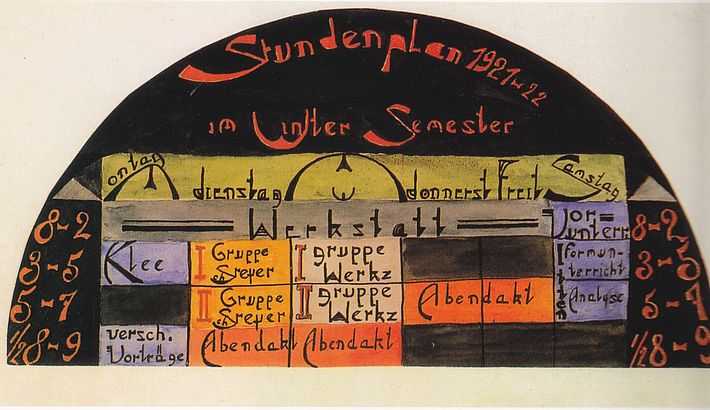Other disciplines
1919–1933
Non-arts subjects were included in the Bauhaus programme from the start. They were often taught by visiting lecturers and professors.

Masters and Teachers
Mart Stam
Hans Wittwer
Alfred Arndt
Ludwig Hilberseimer
Friedrich Engemann
Headline
In addition to teaching in the arts and crafts, the programme of 1919 already included scientific-theoretical classes in subjects such as material science, physical and chemical colour theory, the history of technology, anatomy and business administration (especially book-keeping and contract management). In Dessau, where it effectively operated as a technical university, building trades school and academy, the Bauhaus had to meet the mandates of a vocational school. Among other things, these included a basic education in the natural sciences and general business skills. This aspect was already integrated in the educational framework, which taught illustrative geometry, mathematics, physics and chemistry alongside the principles of creative design. As a result, the Bauhaus was dependent on school cooperation partners for a long time. In Weimar, the main cooperation partner was the building trades school and in Dessau, the technical institutions and the vocational business school.
Architects such as Hans Wittwer, Alfred Arndt, Edvard Heiberg, Ludwig Hilberseimer, Mart Stam and Anton Brenner were usually given tenure, while part-time teachers or visiting lecturers were hired to teach the other subjects. From 1928, the teachers in this area were mainly local engineers such as Friedrich Köhn (illustrative geometry, mathematics), Wilhelm Dehnhardt (heating and ventilation), Alcar Rudelt (structural theory, mathematics, reinforced concrete, statics, strength of materials), Erich Schrader (mathematics, mechanical engineering, illustrative geometry, statics), Max Pfeiffer (structural theory) and technical instructors such as Artur Krause (metal), Hermann Schneider (electrical installation), Richard Vogel (welding technology), Wilhelm Müller (chemistry, technology, building materials), Willi Saemann (mathematics) and Friedrich Engemann (illustrative geometry, mathematics, structural development). The technical teachers in particular had a sound background in vocational training.